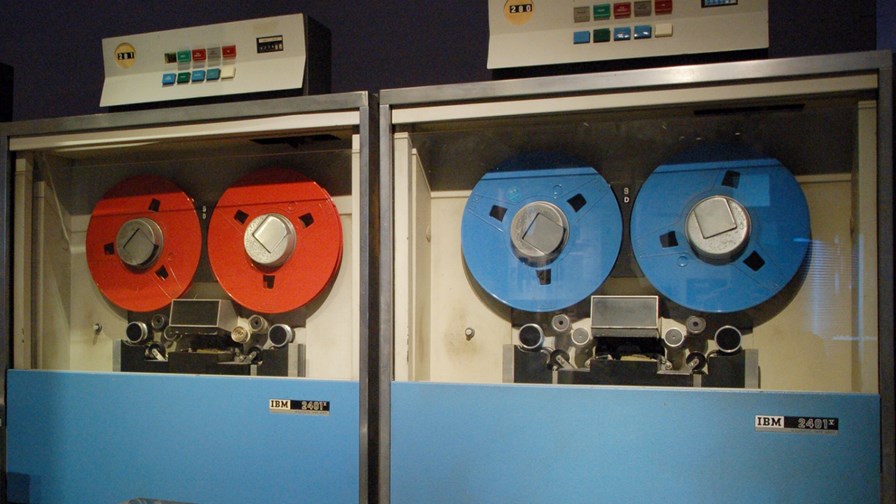No end in sight for magnetic tape storage as IBM and Sony squeeze 201 gigabits per square inch

By Ian Scales
Aug 3, 2017

The IBM 2401 maninframe via Flickr © La case photo de Got (CC BY 2.0)
- Magnetic tape data storage required more than ever
- 201 gigabits per square inch has been squeezed onto a prototype ‘sputtered magnetic tape’
- It's been developed by Sony Storage Media Solutions
When computers lived in glass boxes, were tended by white-coated types with clipboards and most often had an IBM logo, the important visual cue was that jerky reel to reel tape. That’s how you knew it was a computer.
In fact IBM was the tape pioneer. Its 726 Magnetic Tape Unit was launched more than 60 years ago and it used reels of half-inch-wide tape with the astounding capacity of about 2 megabytes - more than ample for any application.
IBM’s computers soon adopted other storage media: there were big disk packs, sealed Winchester drives, floppy and optical disks, but the magnetic tape never went away and IBM (amongst others) kept on improving it to hold more and more data. On it went, in a succession closely resembling a magnetic version of Moore’s Law.
So today, IBM assures us that tape is still the most secure, energy efficient, and cost-effective solution for backing-up and archiving the ever-growing data mountain thrown up by big data, cloud computing and - soon - IoT.
This week research scientists at the 28th Magnetic Recording Conference announced a new world record in tape storage – squeezing 201 gigabits per square inch on a prototype ‘sputtered magnetic tape’ developed by Sony Storage Media Solutions.’
This new record ‘areal’ (pertaining to an area) recording density is more than 20 times the areal density used in current state-of-the-art commercial tape drives. By the way, the big reels of magtape as displayed above are long gone. The new technique can record up to about 330 terabytes of uncompressed data on a single tape cartridge small enough to fit in the palm of your hand. That much storage (biblio comparison warning) could accommodate the text of 330 million books.
All sorts of techniques have been thrown at the tape to get it into commodious shape:
- There are signal-processing algorithms for the data channel, based on noise-predictive detection principles.
- New servo control technologies that enable head positioning with an accuracy of better than 7 nanometres.
- There’s the use of a 8nm-wide TMR hard disk drive read head, which enables a track density of 246,200 tracks per inch
- And there’s a new low-friction tape head technology that permits use of very smooth tape media.
And I know. You want to know what sputtering is. IBM says it involves bombarding a target material with energetic particles such as non-reactive argon gas ions, causing atoms to be separated from the target source and deposited on a substrate. This takes place in a vacuum container with atoms ejected from the target source needing to attach themselves to something, like the substrate, so as to regain thermodynamic equilibrium.
Doesn’t sound as though tape is anywhere near the end of its road yet.
Email Newsletters
Sign up to receive TelecomTV's top news and videos, plus exclusive subscriber-only content direct to your inbox.
Subscribe